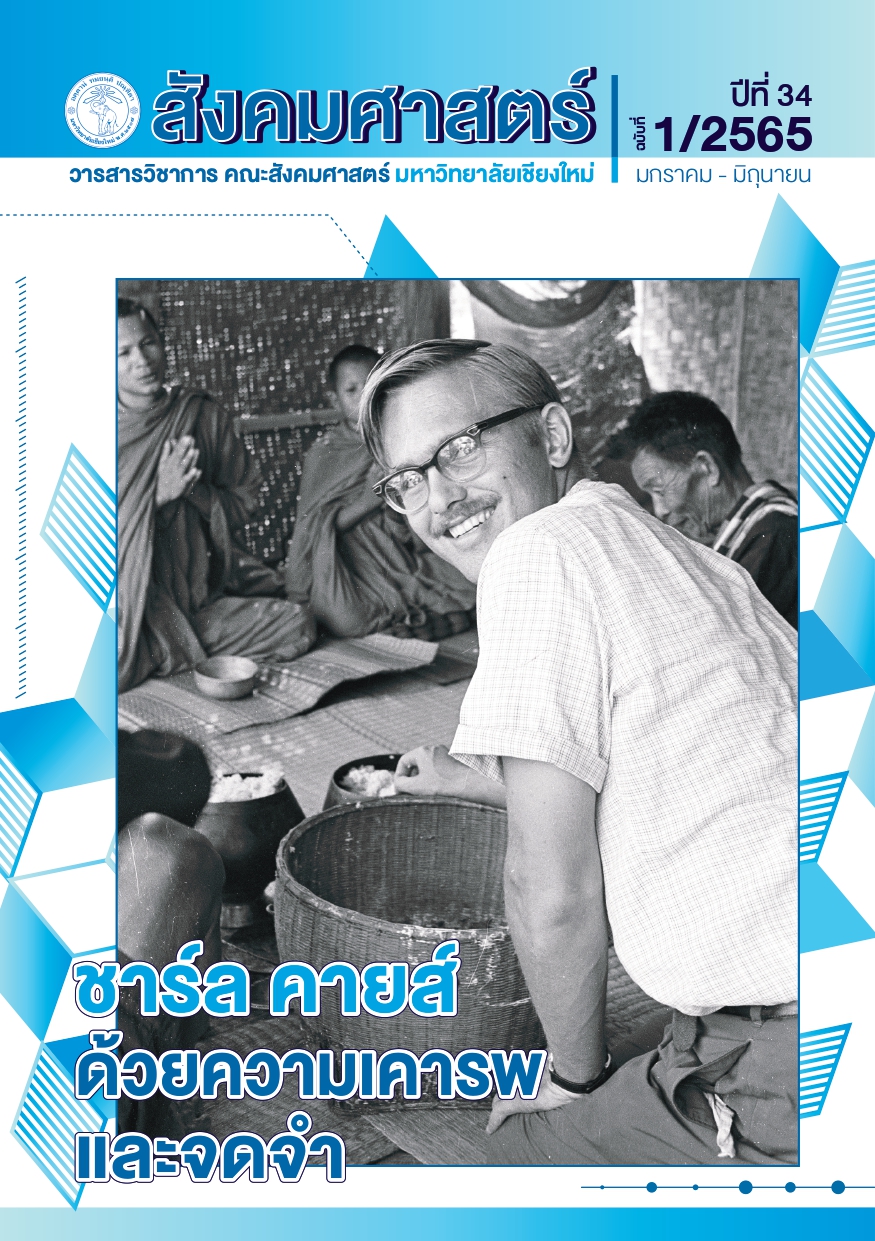Bribe, Bribery, and Extortion: the Grey Area of the Relationship between the State, Capital and Transnational Migrant Workers
Main Article Content
Abstract
This article approaches the problem of bribery and extortion arisen from the state policy regarding the management of migrant workers in the Border Town A through anthropological lenses. Multi-stranded structural forces contributing to such corruptions have been analyzed. These include the neoliberal force that incorporate the border town into the global textile and garment industries where cheap labor is key to capital accumulation the bureaucratic force that regulates migrant labor through its dysfunctional documenting regime and ethnic discrimination that has turned migrant workers into victims of extortion. This article also argues against the institutional approach in corruption studies that tends to emphasize legal aspect in solving corruption problems. State law to manage migrant workers believed to be efficient is in fact a key device that has created a corrupt exception.
Article Details

This work is licensed under a Creative Commons Attribution-NonCommercial-NoDerivatives 4.0 International License.
All written articles published on Journal of Social Sciences is its author’s opinion which is not belonged to Faculty of Social Sciences, Chiang Mai University or is not in a responsibility of the journal’s editorial committee’s members.
References
ปิ่นแก้ว เหลืองอร่ามศรี. 2561. อัตลักษณ์เอกสาร: วงศาวิทยาการควบคุมประชากรของรัฐไทย. เชียงใหม่: สำนักพิมพ์มหาวิทยาลัยเชียงใหม่.
ผาสุก พงษ์ไพจิตร และคณะ. 2557. คอร์รัปชันในภาครัฐ: ความเห็นและประสบการณ์ของครัวเรือน. กรุงเทพฯ: สำนักงานกองทุนสนับสนุนการวิจัย.
สุทธิดา มณีกุล. 2562. การสร้างชายแดนเสรีนิยมใหม่: พลวัตการสะสมทุนและเทคโนโลยีการปกครอง เขตเศรษฐกิจพิเศษแม่สอด. วิทยานิพนธ์ปริญญาโทสาขาสังคมวิทยาและมานุษยวิทยา มหาวิทยาลัยเชียงใหม่.
ภาษาอังกฤษ
Akkanut Wantanasombut. 2015. The Ant Army: A Significant Mechanism of Thailand-Myan mar Illegal Trade (1988-2012). MA. thesis Chulalongkorn University.
Endres Kirsten W. 2014. “Making Law: Small-Scale Trade and Corrupt Exceptions
at the Vietnam–China Border”. American Anthropologist 116 (3): 611–625.
Goto Kento. and Endo, Tamaki. 2014. Upgrading Relocating Informalising? Local Strategies in the Era of Globalisation: The Thai Garment Industry. Journal of Contemporary Asia 44(1) 1-18.
Jaisat Kanchanadiut. Biel, Erin, and Press, Brahm. 2014. Migrant Workers in Thailand’s Garment Factories. Chiang Mai: Clean Clothes Campaign and MAP Foundation’s (MAP).
Haller Dieter and Shore, Cris. (eds.). 2005. Corruption: Anthropological Perspectives. London: Pluto Press.
Muir, Sarah and Gupta, Akhil. 2018. “Rethinking the Anthropology of Corruption: An Introduction to Supplement 18. Current Anthropology 59(18) 1-15. https://
www.journals.uchicago.edu/doi/pdfplus/10.1086/696161
Pitch Pongsawat. 2007. Border Partial Citizenship Border Towns and Thai–Myanmar Cross- Border Development: Case Studies at the Thai Border Towns. PhD dissertation City and Regional Planning University of California Berkeley.
Reddy, Malavika. 2015 “Identity Paper/Work/s and the Unmaking of Legal Status in Mae Sot Thailand”. Asian Journal of Law and Society 2: 251–266.
Renard, Ronald. 2000. “The Differential Integration of Hill People into the Thai State”. In Tur ton A. (ed.). Civility and Savagery: Social Identity in Thai States (pp.63-83). Rich mond Surrey: Curzon.
Sampson, Steven. 1983. Bureaucracy and Corruption as Anthropological Problems:
A Case Study from Romania Folk Vol. 25: 63–96. Torsello, Davide and Venard, Bertrand. 2015. “The Anthropology of Corruption." Journal of Management Inquiry 25 (1) 34-54.
United Nations Office on Drugs and Crime (UNODC). 2013. Business Corruption and Crime in the Western Balkans: The Impact of Bribery and Other Crime on Private Enterprise. Vienna: UNODC.
United Nations Office on Drugs and Crime (UNODC). 2017. Corruption in Nigeria Bribery: Public Experience and Response. Vienna: UNODC.


